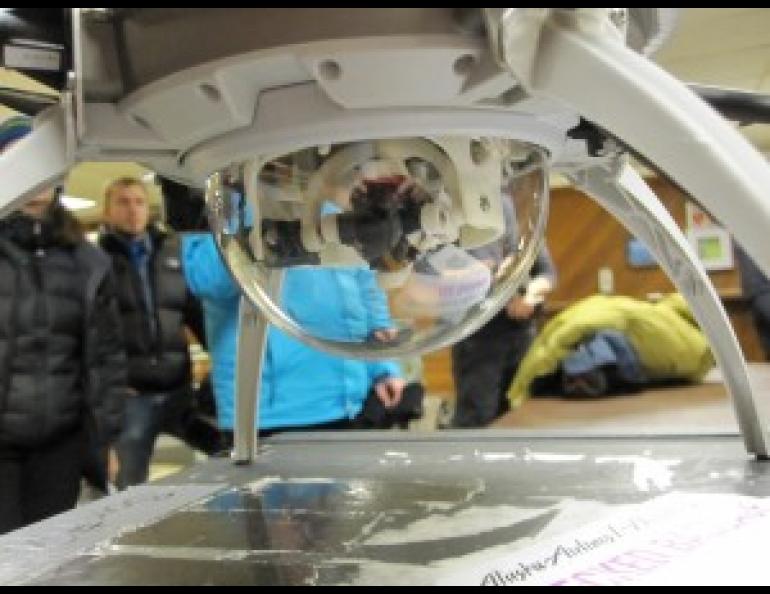
Unmanned aircraft kick off Science for Alaska lectures
As the Coast Guard Cutter Healy and the tanker vessel Renda moved slowly through sea ice toward Nome, University of Alaska Fairbanks personnel used unmanned aircraft to survey the terrain and plot the safest path for approaching the harbor. The aircraft captured images that allowed scientists to assess ice thickness in places that were too dangerous to traverse on foot. The deployment of UAF’s fleet to Nome is but one example of the aircraft’s application.
Poker Flat Research Range Manager Greg Walker will discuss the growing role of unmanned aircraft in Alaska at the first Science for Alaska Lecture Series presentation Tuesday, Jan. 31 at 7 p.m. in the Westmark Gold Room. The lecture, “Alaska – As Seen From an Unmanned Aircraft,” is the first in the 20th annual Science for Alaska Lecture Series.
Researchers at UAF are harnessing the rapidly developing technology of unmanned aerial vehicles and Geophysical Institute scientists are quickly learning the possibilities as well as the limitations of the aircraft as they deploy their fleet of flying machines from boreal forest to ocean. From climate change to emergency management, unmanned aircraft are able to observe and collect data from a vantage point impossible for human researchers.
Science for Alaska 2012 is sponsored by the Geophysical Institute, UAF and Alyeska Pipeline Service Company. The series runs on Tuesdays through March 6, 2012 and is free to the public. Hands-on activities for all ages begin at 6:30 p.m. inside the Gold Room. Families are welcome.
ON THE WEB: http://www.scienceforalaska.com
SS/1-27-12/144-12
Stevie Seibert, University of Alaska Fairbanks Geophysical Institute, 907-474-5229, stevie.seibert@gi.alaska.edu
Greg Walker, Poker Flat Research Range, 907-455-2110, gregory.walker@gi.alaska.edu
Amy Hartley, University of Alaska Fairbanks Geophysical Institute, 907-474-5823, amy.hartley@gi.alaska.edu





